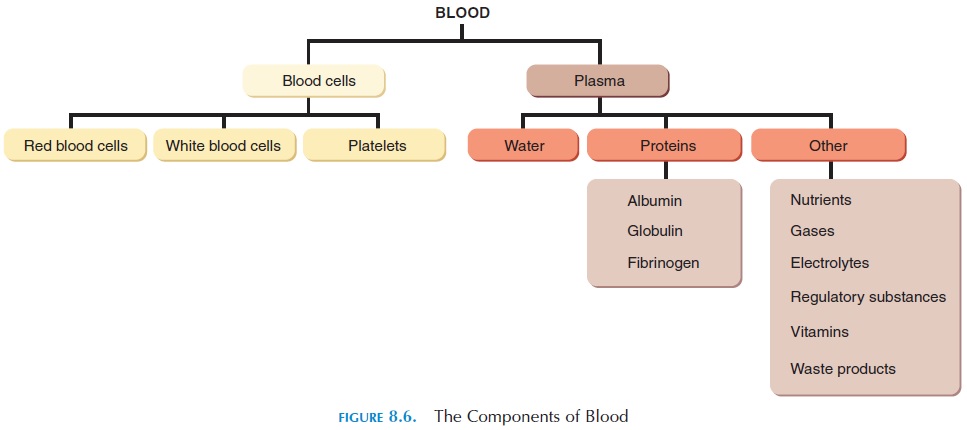Chapter: The Massage Connection ANATOMY AND PHYSIOLOGY : Cardiovascular System
Plasma - Blood
PLASMA
Plasma, the fluid portion of the blood, is 91.5% water and 8.5% solutes. The solutes are protein (7%) and a variety of ions and substances that are transported from one part of the body to another (see Figure 8.6), including enzymes, hormones, gases, nutrients, waste products such as urea, uric acid, creatinine, ammonia, and bilirubin. Plasma occupies a volume of about 3,500 mL (3.7 qt) in a man weighing 70 kg (154 lb). The fluid that remains after blood is allowed to clot and the clot removed is known asserum.

Plasma Proteins
Plasma proteins are the major components of plasma. They consist of albumin, globulin, and fi-brinogen. Most plasma proteins are manufactured inthe liver. Some plasma proteins (immunoglobulins/ antibodies) are made by specific lymphocytes.
The plasma proteins have varied functions. They serve to maintain the pH of the blood at 7.4. Some protein components are antibodies that recognize specific antigens. A few of the clotting factors are pro-teins. Some proteins serve as transport carriers for hormones, metals, amino acids, fatty acids, enzymes, and drugs. Because the protein molecules are large and the capillary walls are impermeable to them, substances escape filtration by the kidneys and stay longer in the blood when they are bound to proteins.
The protein fractions exert an osmotic force of about 25 mm Hg across the capillary wall. This force tends to pull water into the bloodfrom the surrounding fluid compartments, such as the interstitial compartment, and maintains the blood volume. In individuals with protein deficiency, the re-duction of this force is responsible for the edema that develops. For example, individuals with kidney failure who lose protein in the urine, individuals with severe eating disorders with significantly reduced protein in-take, individuals with malabsorption syndrome as a result of intestinal diseases, and individuals with liver disease in which protein manufacture is depressed.
Related Topics